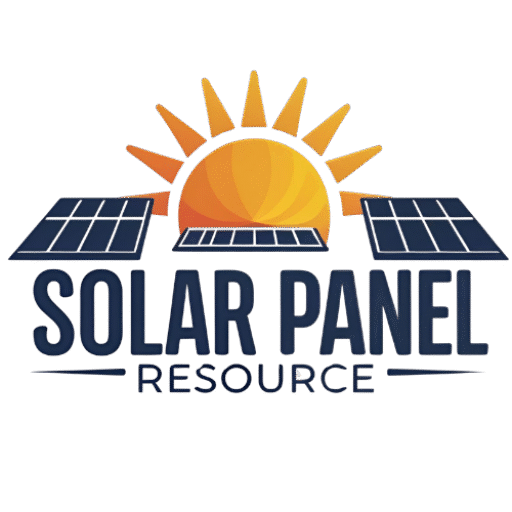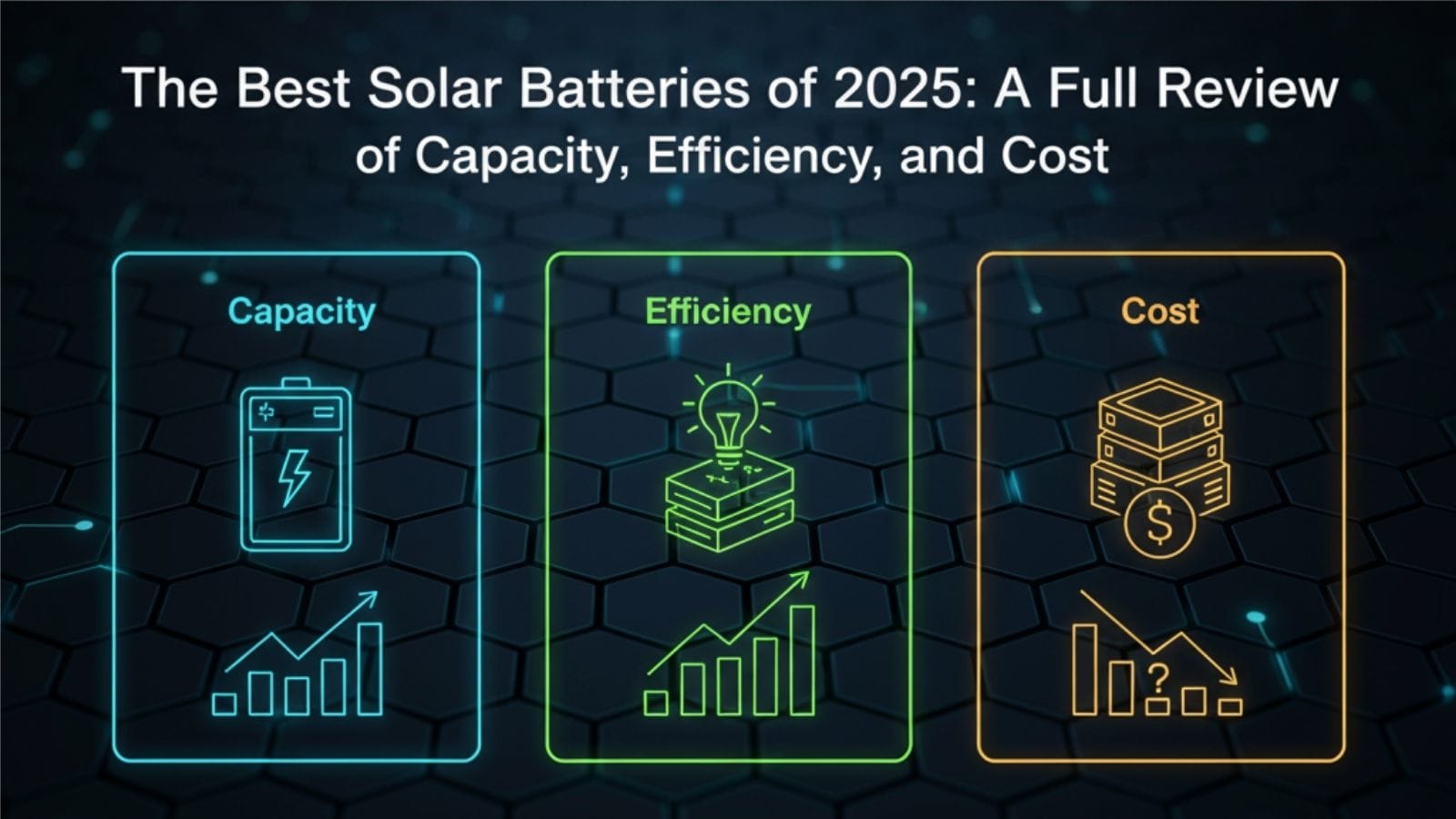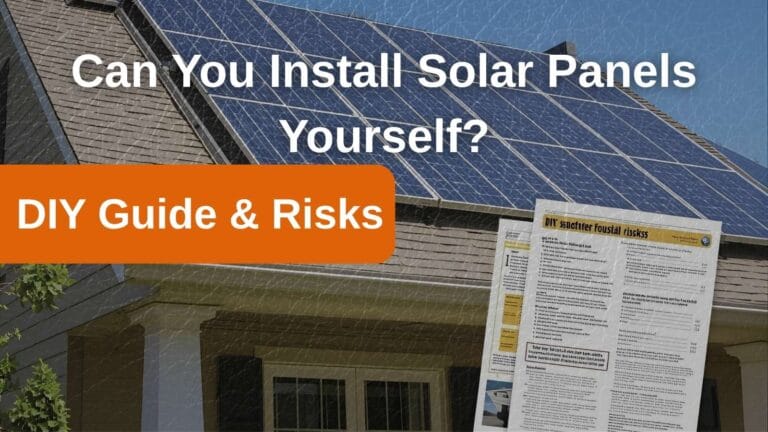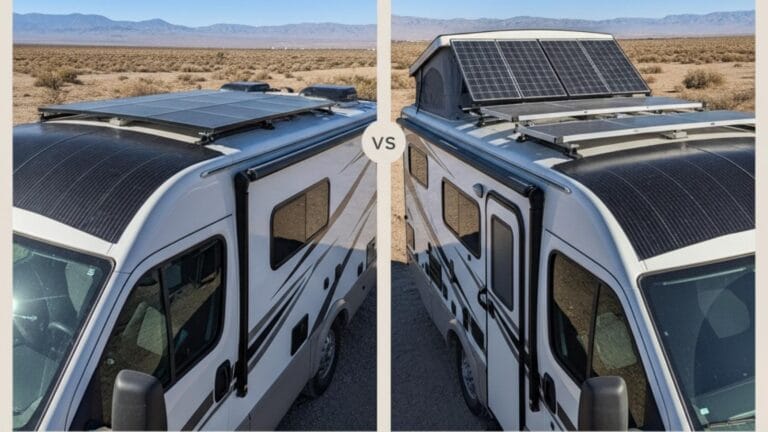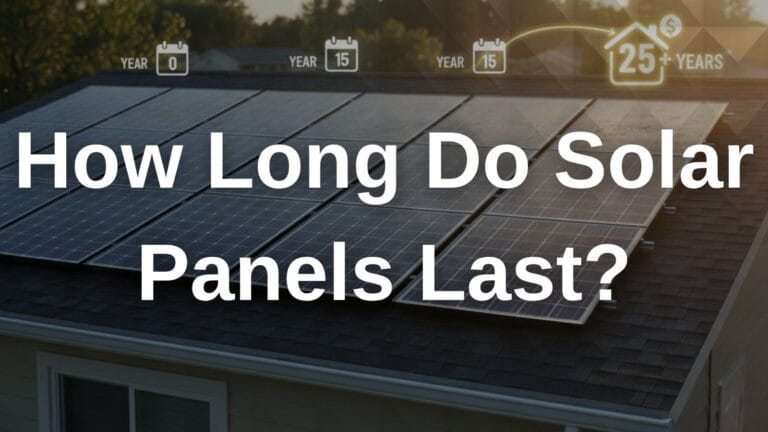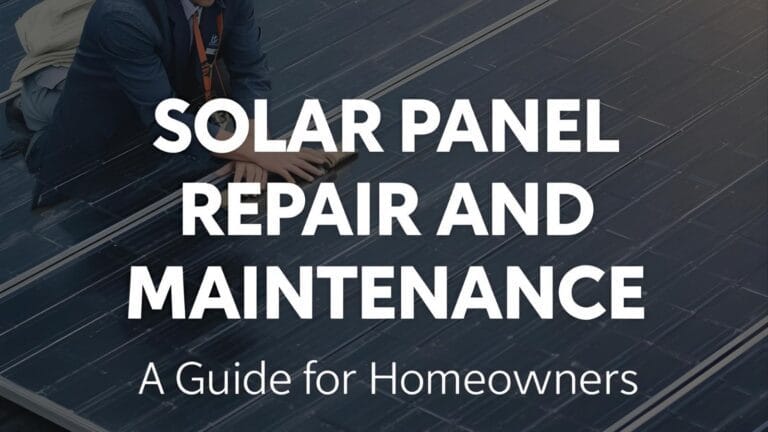The Best Solar Batteries of 2025: A Full Review of Capacity, Efficiency, and Cost
For homeowners in 2025, the solar energy conversation has fundamentally changed. It’s no longer just about generating power; it’s about storing and controlling it. With rising energy costs, grid instability, and the increasing desire for energy resilience, investing in one of the best solar batteries has shifted from a luxury add-on to a core component of a modern home energy system. A battery unlocks the true potential of your solar panels, giving you power at night, security during an outage, and freedom from peak utility rates.
But as the technology explodes in popularity, the market has become crowded with high-tech options, all claiming to be the best. From industry giants like Tesla and Enphase to powerful new contenders, homeowners are faced with a complex decision. How do you compare capacity, efficiency, power output, and cost? And most importantly, which battery is the right choice for your specific home and energy goals?
This comprehensive guide provides an expert review of the best solar batteries of 2025. We will demystify the technical jargon, provide a head-to-head comparison of the top models, and give you the transparent, actionable insights you need to make a confident investment in your home’s energy independence.
What Key Metrics Define the “Best” Solar Battery?
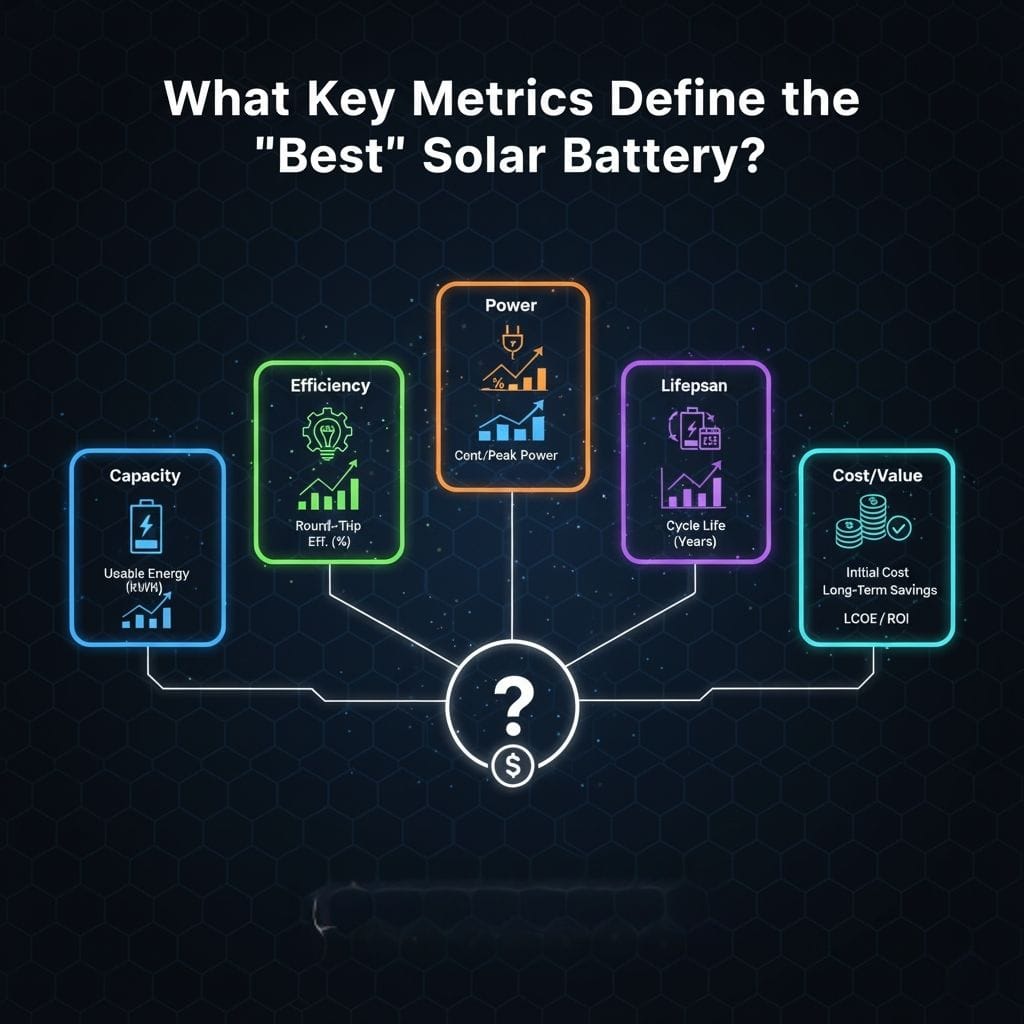
Before reviewing specific models, it’s crucial to understand how solar batteries are measured. A battery’s “best” title depends entirely on your needs, but all are judged by these key performance metrics. Understanding these terms is the most important step in your research.
What is Battery Capacity (kWh) vs. Power Output (kW)?
This is the most common point of confusion for consumers.
- Capacity (measured in kilowatt-hours, kWh): This is the total amount of energy the battery can store. Think of this as the size of your gas tank. A 13.5 kWh battery can deliver 1 kilowatt of power for 13.5 hours.
- Power Output (measured in kilowatts, kW): This is the amount of electricity the battery can deliver at one time. Think of this as the size of the fuel hose. A battery with a high 11.5 kW power output can run many large appliances (like a central A/C, a well pump, and a microwave) all at once.
A battery with high capacity but low power might last a long time running just a few lights, while a high-power battery can run your whole home, but for a shorter duration. The best systems balance both.
Why is Depth of Discharge (DoD) Important?
Depth of Discharge (DoD) refers to the percentage of a battery’s total capacity that can be safely used without damaging it. Older battery technologies could only be drained to 50% DoD. The modern standard for the best LFP solar battery (Lithium Iron Phosphate) is 90-100% DoD. This means a 10 kWh battery with 100% DoD gives you 10 kWh of usable energy. All models reviewed here feature a high DoD.
What is Round-Trip Efficiency?
Round-trip efficiency measures how much energy you get out of a battery for every unit of energy you put in. Some energy is always lost as heat during charging and discharging. A good battery in 2025 has a round-trip efficiency of 85-95%. A higher efficiency means less of your precious solar energy is wasted.
What is Battery Chemistry (LFP vs. NMC)?
In 2025, the solar industry has almost universally adopted Lithium Iron Phosphate (LFP) chemistry over the older Lithium Nickel Manganese Cobalt (NMC). LFP is the superior choice for home energy storage because it is:
- Safer: LFP is far less prone to thermal runaway (catching fire) and is more stable at high temperatures.
- Longer-Lasting: LFP batteries can typically handle 2-4 times more charge cycles than NMC, giving them a much longer lifespan.
All batteries on our “best of” list are LFP batteries, as we consider this a non-negotiable standard for homeowner safety and value.
What Should You Look for in a Solar Battery Warranty?
A warranty is a manufacturer’s promise of performance. Look for two key numbers:
- Years: The standard is 10 years. Some premium models now offer 15 years.
- Cycles or Throughput: This guarantees the battery will last for a certain number of charge/discharge cycles (e.g., 6,000 cycles) or a total amount of energy (e.g., 70 MWh).
The warranty should also guarantee a minimum capacity at the end of the term (e.g., 70% of original capacity after 10 years).
The Best Solar Batteries of 2025: A Head-to-Head Review
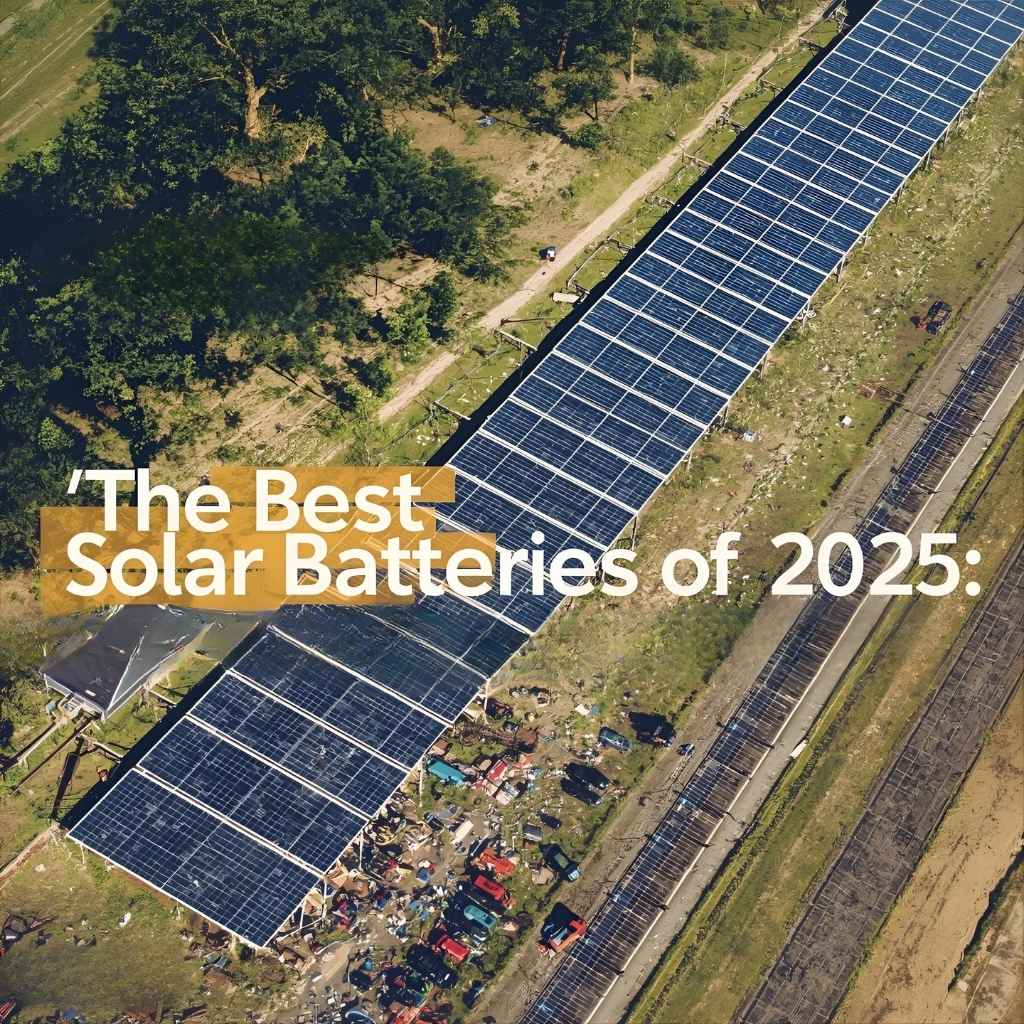
Based on the criteria above, we’ve selected the top-performing solar batteries on the market. These models represent the best in power, scalability, and overall value for homeowners in 2025.
1. Best Overall & Highest Power: Tesla Powerwall 3
The Tesla Powerwall 3 has created enormous buzz by integrating a solar inverter directly into the battery unit. This all-in-one approach streamlines installation and provides immense power.
It features a massive 11.5 kW of continuous power output, making it a top contender for whole-home backup from a single unit. It can easily start and run heavy loads like 5-ton air conditioners. Its 13.5 kWh capacity is the same as its predecessor, the Powerwall 2, and remains a solid size for most homes’ overnight needs. As a DC-coupled battery (when paired with new solar), it can be highly efficient.
- Pros: Unmatched 11.5 kW power output, integrated solar inverter simplifies new installations, sleek design, and strong brand ecosystem.
- Cons: Less modular than competitors (capacity is fixed at 13.5 kWh increments), and the integrated inverter makes it a less flexible “retrofit” option for homes with existing solar.
2. Best for Scalability & Existing Systems: Enphase IQ Battery 5P
Enphase’s strategy is the opposite of Tesla’s. The Enphase IQ Battery 5P is a modular, AC-coupled battery. This means you can start small and add more batteries over time. Each unit provides 5.0 kWh of capacity and a robust 3.84 kW of power.
Because it’s an AC-coupled system, it’s the easiest and most popular choice for retrofitting onto homes that already have a solar panel system (especially one with Enphase microinverters). The new 5P model uses passive cooling (no moving fans), making it silent. Its biggest advantage? An industry-leading 15-year warranty, giving it a significant edge in long-term peace of mind.
- Pros: Excellent 15-year warranty, highly scalable (stack units from 5 to 80 kWh), easiest option for adding to existing solar systems, silent operation.
- Cons: Lower power per unit (a 13.5 kWh equivalent would require three 5P units), and the cost per kWh can be higher at smaller scales.
3. Best for Smart Energy Management: FranklinWH aPower
FranklinWH, akıllı enerji yönetimine odaklanan güçlü bir rakip. FranklinWH aPower bataryası, 13,6 kWh kullanılabilir kapasite ve 10 kW’lık çok güçlü bir sürekli güç sunarak , tüm ev için yedekleme konusunda Tesla ile doğrudan rekabet ediyor.
Where it truly shines is its control system (the aGate), which can intelligently manage your home’s loads. It can also integrate with generators for even more robust backup, a feature not all battery systems handle as smoothly. It’s an AC-coupled system, making it a great retrofit for existing solar systems of any brand.
- Pros: High 10 kW power output, generator integration, sophisticated energy management controller, 12-year warranty.
- Cons: A less-known brand than Tesla or Enphase, and it’s a physically large and heavy unit.
4. Best Value & Warranty from a Tier-1 Brand: Qcells Q.HOME CORE (Gen3)
Qcells, one of the world’s largest solar panel manufacturers, has a compelling battery solution. The Q.HOME CORE (Generation 3) is a modular system that combines a hybrid inverter with stackable battery units (6.8 kWh each).
This system provides an excellent balance of cost, performance, and reliability from a massive, bankable company. You can scale the system from 6.8 kWh to 20.4 kWh. The system is backed by an inclusive 15-year warranty on both the inverter and battery, providing a single point of contact for service, which is a major plus for homeowners.
- Pros: Excellent 15-year warranty from a single, trusted manufacturer. Flexible, modular design. Competitive pricing often makes it a high-value choice.
- Cons: The hybrid inverter is best for new installations; it’s less ideal as a simple retrofit compared to an AC-coupled battery.
How Do the Top Solar Battery Models Compare? (Spec-for-Spec)
This table provides a clear, at-a-glance comparison of the key specifications for our top-rated models. Note that specs for “Installed Cost” are estimates, as they vary significantly by location and installer.
| Model (2025) | Usable Capacity | Continuous Power | System Type | Warranty (Years) | Estimated Installed Cost |
|---|---|---|---|---|---|
| Tesla Powerwall 3 | 13.5 kWh | 11.5 kW | DC-Coupled Hybrid (Integrated Inverter) | 10 Years | $14,000 – $18,000 |
| Enphase IQ Battery 5P | 5.0 kWh (per unit) | 3.84 kW (per unit) | AC-Coupled (Modular) | 15 Years | $7,000 – $9,000 (for one 5kWh unit) |
| FranklinWH aPower | 13.6 kWh | 10.0 kW | AC-Coupled (Integrated Controller) | 12 Years | $15,000 – $19,000 |
| Qcells Q.HOME CORE (Gen3) | 6.8 kWh (per unit) | 4.9 kW (Inverter) | DC-Coupled Hybrid (Modular) | 15 Years | $12,000 – $16,000 (for 13.6kWh) |
How Much Do Home Solar Batteries Cost in 2025?
The installed solar battery cost in 2025 typically ranges from $10,000 to $20,000 for a complete system, including the battery, supporting hardware, and labor. While the prices in the table above provide a good baseline, several factors influence your final cost:
- Total Capacity: The more kWh of storage you need, the higher the price.
- Installer and Location: Labor rates and permitting fees vary significantly by region.
- Incentives: The U.S. Federal Clean Energy Credit (as detailed by the U.S. Department of Energy) allows homeowners to deduct 30% of the total cost of their solar-plus-storage system from their federal taxes. Many states offer additional rebates.
- Electrical Upgrades: Some homes may require a main panel upgrade to accommodate the new battery system, adding to the cost.
How Do You Choose the Right Solar Battery for Your Home?
The best solar battery for your home is the one that best matches your primary goal. The technology has matured significantly, and as the National Renewable Energy Laboratory (NREL) notes, residential storage is a key component of grid modernization. Here is a simple framework to guide your decision.
Choose your battery based on your main goal:
- If your goal is MAXIMUM POWER for whole-home backup…
The Tesla Powerwall 3 is the clear winner. Its 11.5 kW of continuous power from a single unit is unmatched and designed to run your entire home, including large A/C units, without compromise. The FranklinWH aPower is a very close second with 10 kW of power and excellent generator integration. - If your goal is to ADD A BATTERY to an existing solar system…
The Enphase IQ Battery 5P is the top choice. As an AC-coupled battery, it’s designed to be “plug-and-play” with any existing solar system, especially those already using Enphase microinverters. - If your goal is to START SMALL and add more storage later…
The Enphase IQ Battery 5P (starting at 5 kWh) and the Qcells Q.HOME CORE (starting at 6.8 kWh) are your best options. Their modular, stackable designs allow you to buy only what you need now and easily expand your capacity in the future. - If your goal is the BEST WARRANTY and long-term peace of mind…
The Enphase IQ Battery 5P and Qcells Q.HOME CORE lead the pack with their outstanding 15-year warranties, offering 50% more protection than the 10-year industry standard.
The Future of Home Energy is Storage
The solar battery market of 2025 is more powerful, safer, and more competitive than ever. The widespread adoption of LFP chemistry and the rise of modular, high-power solutions have given homeowners incredible options. While the Tesla Powerwall 3 sets the benchmark for all-in-one power, Enphase and Qcells have countered with superior warranties and scalable, modular flexibility. The “best” choice is no longer one brand, but the specific system that aligns with your budget, your existing hardware, and your ultimate goal—whether it’s saving money on peak rates or achieving true energy independence during a blackout.

Solar Energy Enthusiast & Renewable Energy Researcher
Vural’s journey into solar energy began four years ago, driven by frequent power outages and high electricity bills at his own home. He has since gained hands-on experience with both personal and commercial solar projects. At solarpanelresource.com, Vural shares his real-world insights and in-depth research to guide homeowners and business owners on their own path to energy independence.
